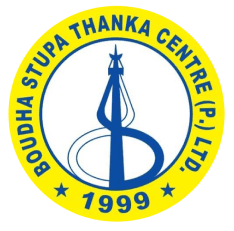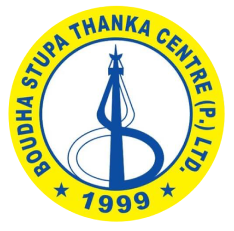Vajrakilaya thangka painting is a portray of the wrathful deity Vajrakilaya, also known as Dorje Phurba or Phurbu. He is a powerful and fierce protector deity in Tibetan Buddhism. He is associated with the practice of tantra and is considered the embodiment of the Buddha's power.
In Tibetan thangka painting, Vajrakilaya is depicted as a blue-skinned fierece deva with one face and three eyes, holding a vajra kilaya (a ritual object symbolizing indestructibility and the power to cut through ignorance) in his right hand and a skull cup filled with blood in his left hand. He is often shown standing on a prostrate figure, symbolizing his subjugation of the forces of evil.
In Buddhism, Vajrakilaya is considered one of the eight main dharmapalas, or protectors of the teachings, along with Mahakala, Kalarupa, and others. Each of the eight protectors represents a different aspect of the teachings and is invoked in different rituals and practices. Vajrakilaya is particularly invoked for protection and purification, and his practice is said to be highly effective in removing obstacles and negative influences.
Vajrakilaya is also considered one of the main protectors of the Nyingma School of Tibetan Buddhism, and his practice is considered a powerful way to achieve spiritual advancement and attain enlightenment. In addition to statues and paintings, Vajrakilaya is also honored in rituals and ceremonies, and his image portrayed in Vajrakilaya thangka painting is used in meditation practices.
Vajrakilaya mantra, "Om Vajra Kilaya Hum," is recited for protection and to invoke the power of the Buddha. Practitioners of Vajrakilaya believe that by visualizing and invoking this deity they can overcome obstacles, purify negative actions, and ultimately attain Buddhahood..











































